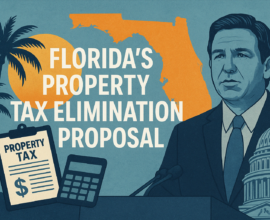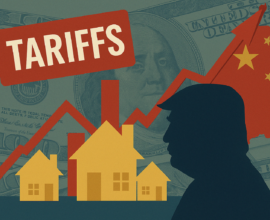What is a Mortgage Rider and when is it Required?
What’s a Mortgage Rider, and When Is It Required?
If there’s one thing that is commonly agreed upon by those who own real estate, it’s that owning a home comes with signing a lot of documents.
From mortgages to disclosures to applications, the documents involved in the mortgage process are riddled with “sign here please.” One document that people often question when they are finally at the signing table is the often-unknown mortgage rider.
What Is a Mortgage Rider?
A mortgage rider is an addendum to your mortgage documents that states more detailed features of the property or type of mortgage you are getting.
Since mortgage documents are typically pre-generated and filled with your loan’s parameters, mortgage riders are utilized when your mortgage is beyond a standard single-family, owner-occupied, fixed-rate mortgage. If the property you are buying exceeds these “standard” property features, chances are you will see a mortgage rider added to the list of documents for you to sign at closing.
The document is typically signed directly after signing the mortgage documents and will be recorded in the public record in the same manner.
Why Do Mortgage Riders Exist?
Since mortgages are often signed on pre-drafted documents, mortgage riders serve as additional documentation that specifies unique features of the property that the mortgage is secured by.
Do All Mortgages Have a Mortgage Rider?
The short answer is no.
Mortgage riders are specific and pertain to the unique features of your mortgage or the property you are buying. For example, there is 1-4 family rider that is specifically for properties that have more than one unit.
Why Should I Know About Mortgage Riders?
Understanding mortgage riders is just as important as understanding all of the other documents you sign your name on in order to purchase your home. In most cases, the rider protects the lender by clearly stating the unique circumstances of your mortgage.
If you are an investor, understanding the different types of riders can be helpful when you are searching public records for off-market deals. Riders are recorded in the public records and usually follow the final signed page of the mortgage. Riders must also be signed and dated.
The Most Popular Mortgage Riders
1. Condominium, Co-Op, or PUD Rider
This type of rider is, of course, for condos, co-ops, and PUDs (planned urban developments). Additional documentation is required for loans secured by condos, co-ops, and PUDs. This rider states that documentation is being used as well as other specifications surrounding the conditions of the loan.
2. Adjustable-Rate Mortgage Rider
This rider comes along with mortgages that have an adjustable rate. Unlike fixed-rate mortgages, adjustable-rate mortgages have an interest rate and monthly payment that can significantly change during the term of the loan.
3. 1-4 Family Rider
Going a bit further into what is mentioned on this rider above, a 1-4 family rider protects the lender against the borrower’s potential default by stating that, if the borrower defaults, rent will be collected from the 2-4 unit investment property by the lender. The rent will go towards the outstanding loan balance.
4. Second Home Rider
This rider is used for mortgages that are secured by a property that will be used as a second home or vacation home by the borrower.
5. Revocable Trust Rider
A revocable trust rider is used when the home is being purchased by a trust fund account.
6. Balloon Mortgage Rider
A balloon mortgage rider is attached to mortgages that have a balloon payment on them.
A balloon payment is a lump sum that is due at the end of the loan. They are typically associated with loans that have interest-only payments or are amortized over a period of more than 30 years. This mortgage rider specifically states the lump sum amount that is due and the date it will come due on — again, protecting the lender.
Understanding Mortgage Riders Makes You a Sharper Investor
Here is a full list from Fannie Mae detailing the many mortgage riders that are in use. The ones mentioned above are more commonly used and, therefore, more important to understand should you come across any in your homebuying process or in pursuit of off-market deals.








